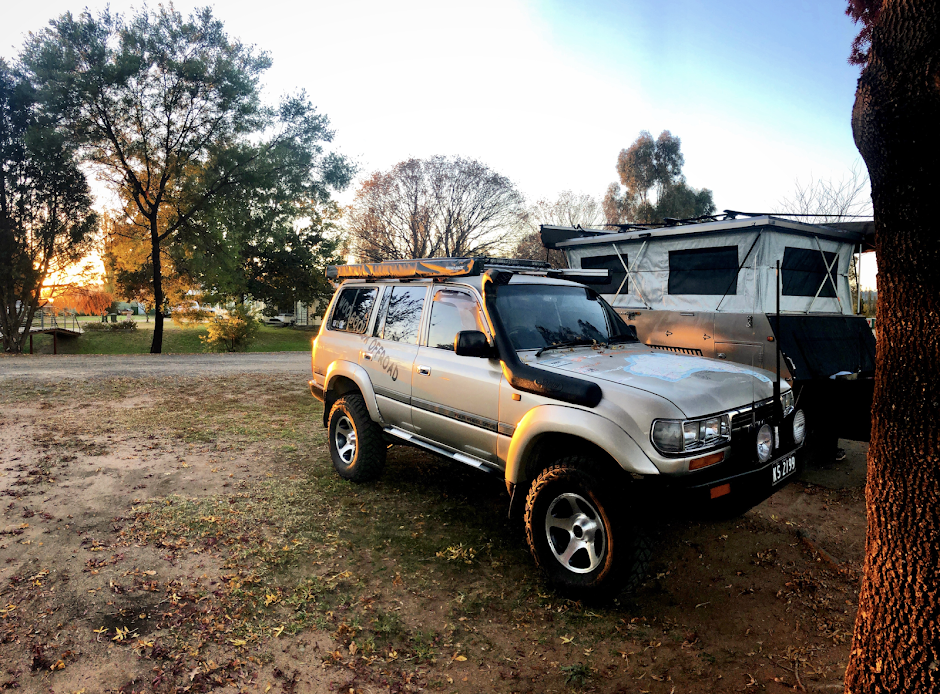Penguin - often described as a little bird that cant fly but is super fast in the cold waters of our polar regions, while this is true its also a stunning place on the north coast of Tasmania. Situated right on the coastal fringe facing Bass Strait the shoreline is forever changing through the wind and swells which can whip up in no time. But it's a beautiful place where the rocky shoreline gives refuge to a host of sea-life and believe it or not, Fairy penguins. Their homes, or Rookeries line this coastal frontage hidden in the thick scrub along the edges of the bay appearing at dawn when they head out to sea to eat and fish for their young and returning at dusk to snuggle in for the night.
The origins of the town can be traced back to 1820 when Joseph Fossey spent time in the area and explored the hinterland behind Penguin, subsequently naming it Dial Range, a few years later timber cutters worked here cutting up thick logs for palings, and believe or not they were headed for the Victorian Gold fields. The cut palings were often carried from the bush to the shore then taken out by row boat to waiting vessels off shore. Several large mines opened up by 1860 giving the town a boost where Copper, Iron Ore and Silver were found. These days the town survives on tourism and also crop fields and the dairy industry in the fertile hills that surround this beautiful town. Penguin is also known for having the largest permeant undercover markets in all of Tassie !!.
Its easy to spend a few hours just strolling the town soaking up its history, enjoying stunning views, visiting little boutique shops and tasting local delicacies. Beecraft Point, which is just a few hundred meters from town was where Ned Beecraft chose to settle on 170 acres back in 1861 and he was the first “official’’ settler to choose his plot just near Penguin Creek. Along the coastal strip you can still find remnants of the past from the old horse troughs that were in strategic places around town for the working horses for when they carted either goods or towed a buggy to town. They were made with the abundant beach gravel, the same as a host of footpaths, retaining walls and several houses in the town that still can be seen today.
The towns name actually derived from the hoards of Penguins that were seen back in 1860 by Robert Gunn, and from then on this place seems like a Penguin haven. No matter where you go in town there’s masses of the little critters, wether it be the big Penguin ( think 12 foot tall ), street murals, steel rubbish bins shaped like Penguins and souvenir Penguins in nearly every shop. Around town a there’s a heritage trail where you can visit over 25 different historical buildings from the railway station, old gaol cell to the stunning Uniting church in the main street which is over 150 years old. This two story church can seat over 500 people over the two levels all having perfect views of the minister. A street back from the railway station is a 1/3rd scale replica of a dutch windmill which was donated to the town in 1998 in memorial to the dutch explorers who discovered this part of the coast.
The area is a nature buffs paradise with plenty of options along the coast or in the hills behind. When the tides are right rock hopping along the edges of the coast is great for the family spotting huge amounts of coastal sea creatures and birdlife. But in the hills behind town is where some of the most stunning walks can be found and this area could be called the Gateway to Cradle Mountain as it looms not very far away. A short 10 min drive to Ferndene Gorge reserve is where you can spend a day exploring beautiful fern lined tracks, follow the tall timber walks and visit Thorsbys and Brownings tunnel which were once silver mines. The tunnel walks are fairly easy with a 1 hour return trip but are definatly well worth it as you follow a creek for some way which is lined with tall tree ferns that give shade to other small petite ferns and moss. The first tunnel Brownings, has been closed off some 40 feet in but you can still walk in to experience tunnel life and Thorsbys tunnel is about 10 minutes further up the track which has collapsed just inside the entrance. Back here at the reserve its the perfect spot to base yourself for the day as you can do one walk - return for lunch then head off in the afternoon to climb either the stunning Mt Gnomon lookout, Mt Dial, Mt Duncan explore the tall timber walk or for the fitness fanatics take the 6 hour hike to Mt Montgomery. Its a stunning walk up around the mountain where fern lined trails are like something out of Jurassic park.
Within the surrounds of the Dial Range forest area is the Penguin mountain bike park where a host of trails have been cut in for the beginner right through to the advanced rider. Trail loops go from 200 metres right through to a 2km loop with jumps and fast sections included. It’s an amazing area where the mountains meet the sea and leaves the imagination open to what’s beyond the fertile hinterland. Explore and be pleasantly surprised.











No comments:
Post a Comment